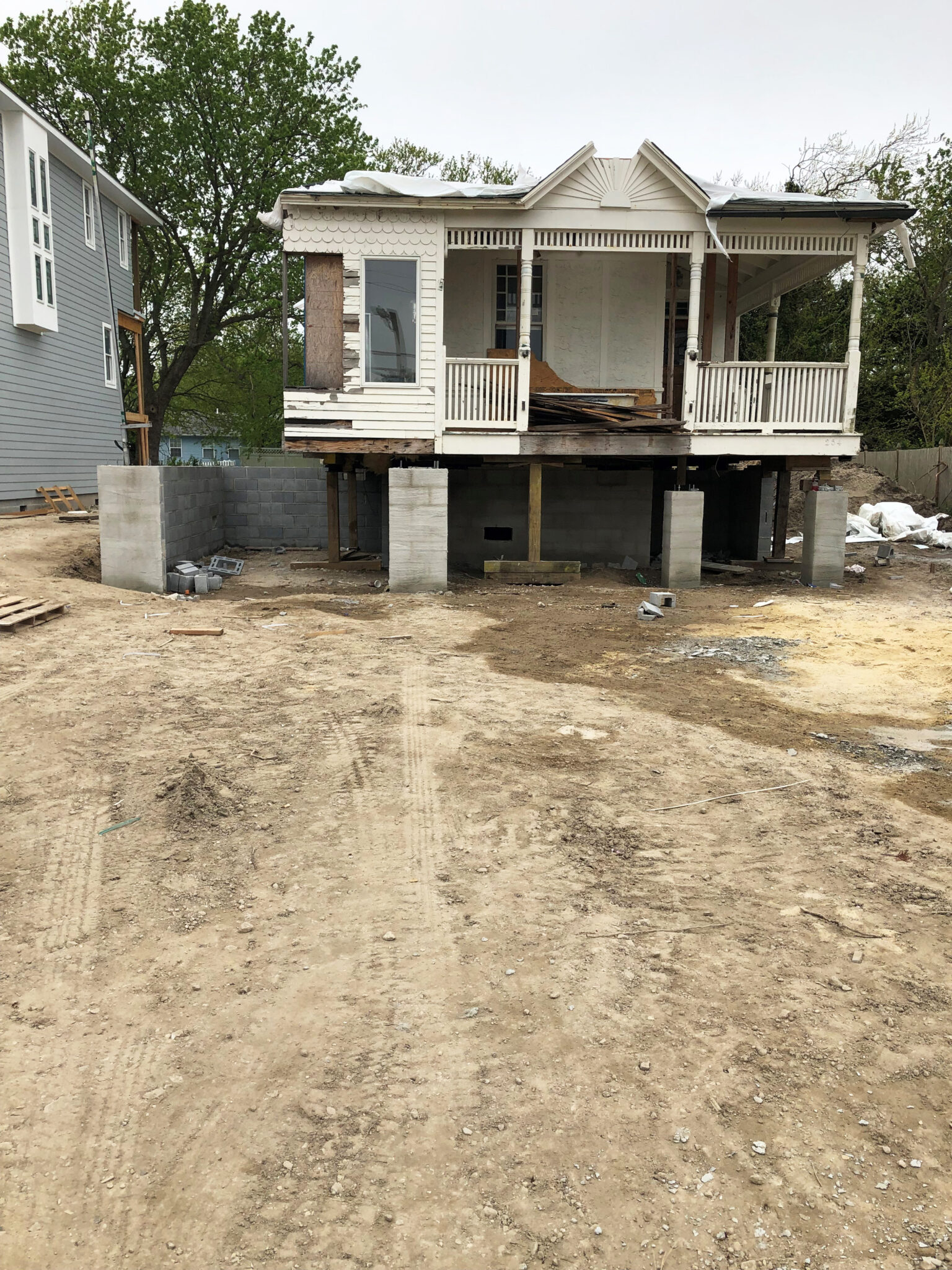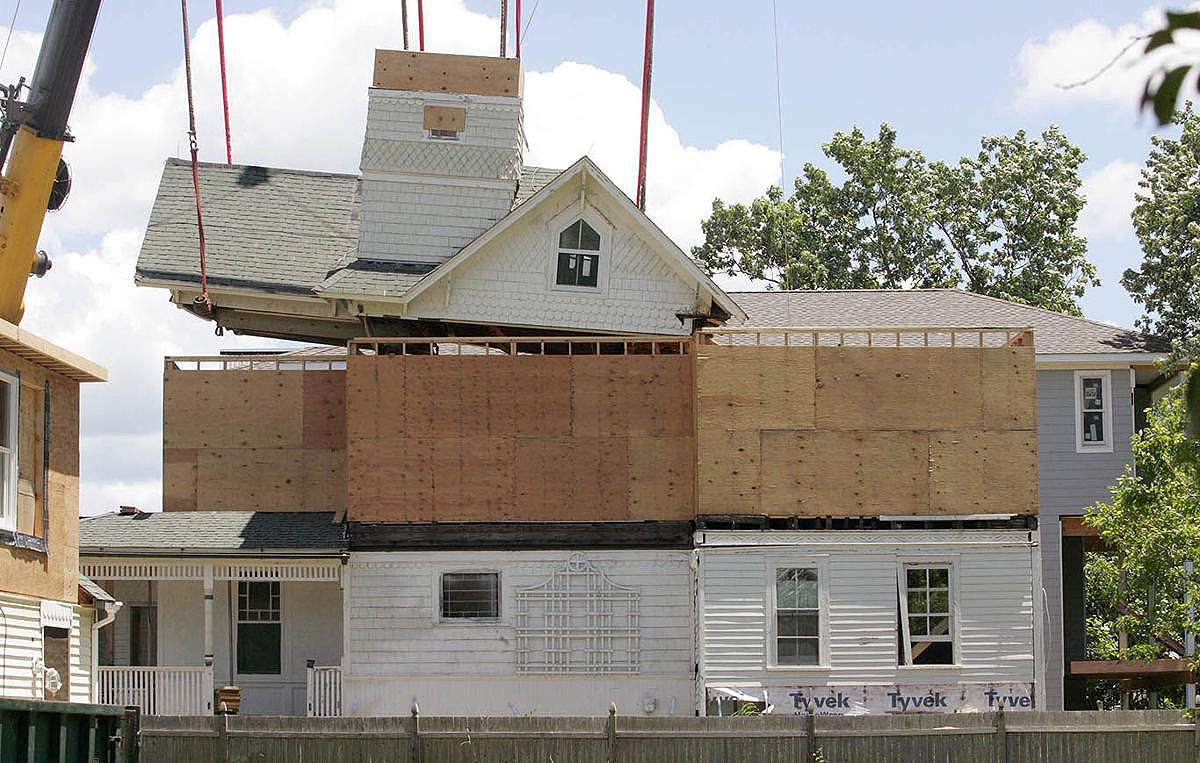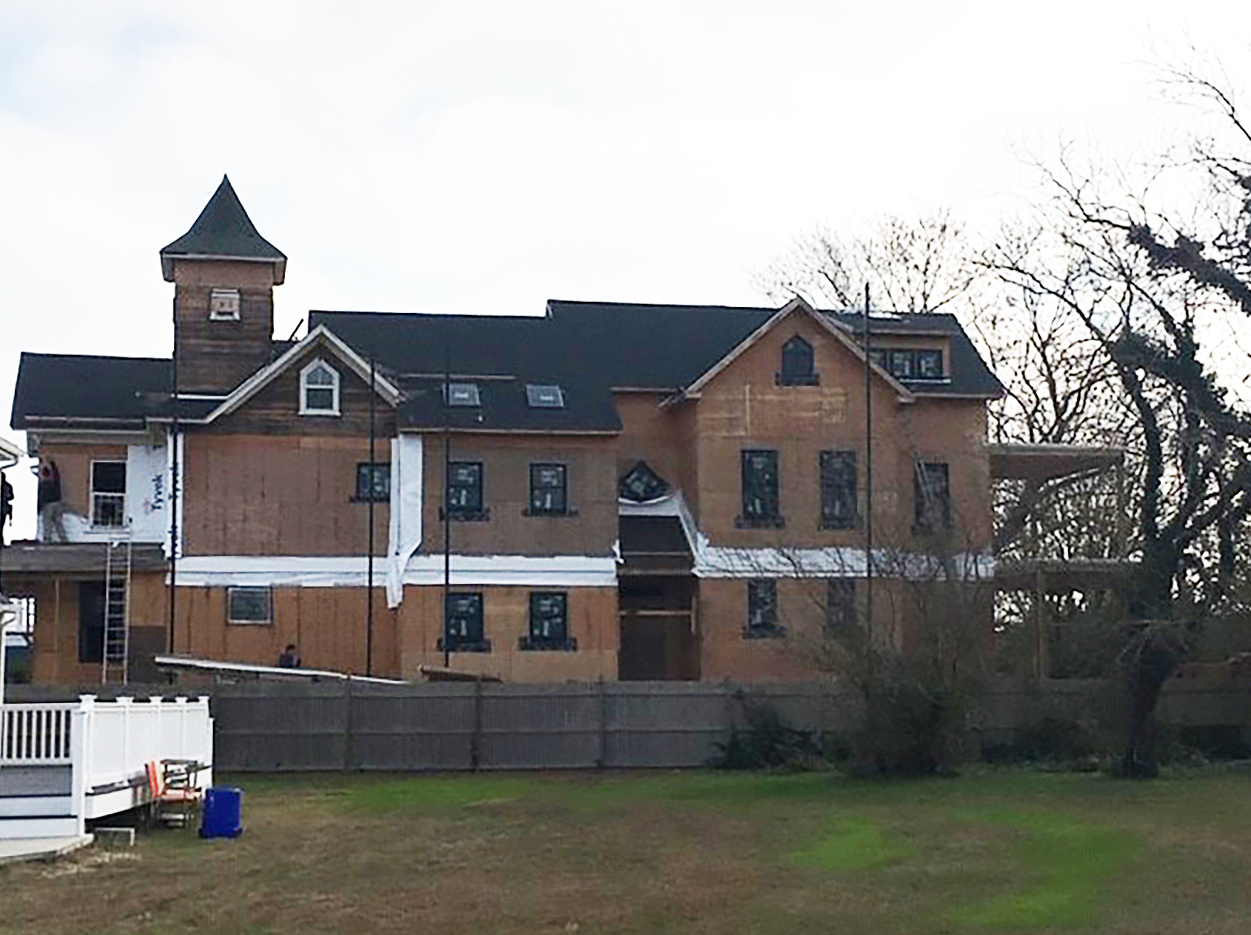Moving a Mansion
Writer Marirose Krall | Location Cape May, NJLogistical hurdles couldn’t stop one determined homeowner from preserving a piece of history
The grand old house in Avalon had always had a special place in the hearts of the Scharnikow family. “My grandparents purchased the home in 1955,” Adrienne Scharnikow says of the 1895 Queen Anne-style residence. “I spent every summer there as a child. I have memories of large family dinners, happy hour on the front porch and open windows — no AC — just breezes!” Scharnikow’s family took scrupulous care of their beloved shore home. “Back in the day, families worked hard for the general upkeep of these homes. My aunts and uncles would hang from ropes and pulleys to paint the tower!”
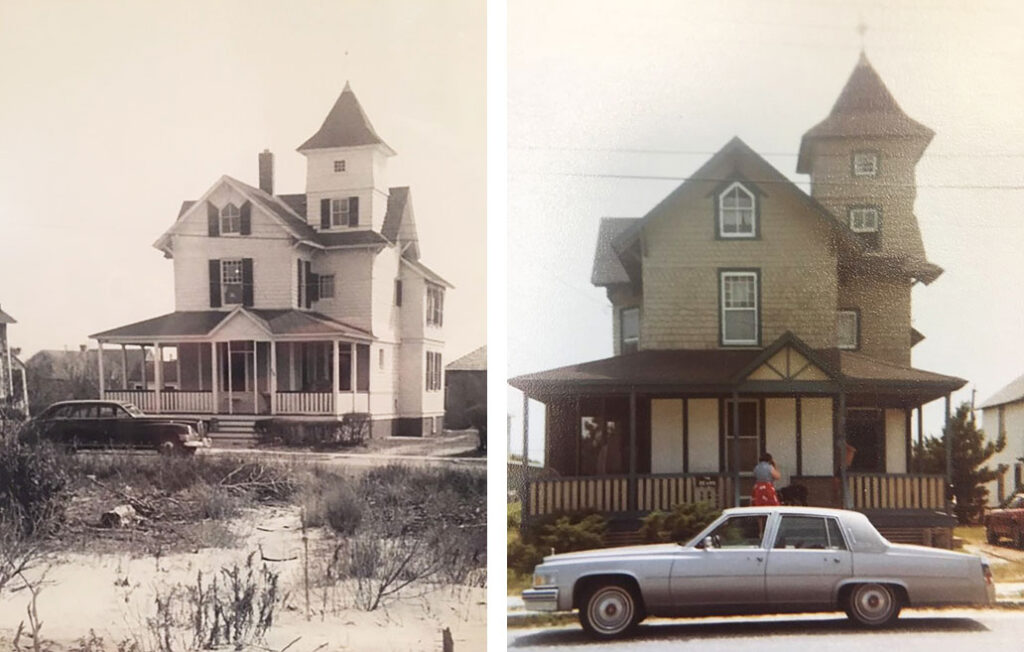
LEFT: The house in 1955, when the Scharnikow family bought it: It was built as a summer cottage by George W. Kates, Avalon’s first tax assessor. The tower appears on nautical maps dating to the late 1800s. RIGHT: The house in the 1980s: “It was reminiscent of old-time New Jersey — farmlands, cottages, trumpet vines, bees and turtles — with the beach right across the street,” homeowner Adrienne Scharnikow says.
Over the decades, perhaps fortified by years of the family’s TLC, the house survived multiple disasters, including lightning strikes that set the tower on fire twice and the 1962 “Ash Wednesday” storm, after which local police took Scharnikow’s grandmother by boat to survey the damage.
The house was sold in 1996 after the passing of Scharnikow’s grandparents, but, she notes, “we always kept an eye on it to see if it was still standing.” In 2017, though the house was upright, it had fallen into disrepair and was sold to a developer at a sheriff’s sale. “We knew what was coming next.” Trying to halt the demolition, Scharnikow contacted the developer. “I tried to convince him to renovate, but a new home was already designed to be in its place.” Undeterred, Scharnikow persuaded him to allow her to move the home off the lot. Within two weeks, she obtained a quitclaim deed (a legal method of transferring a property quickly) and the house was hers for $1.
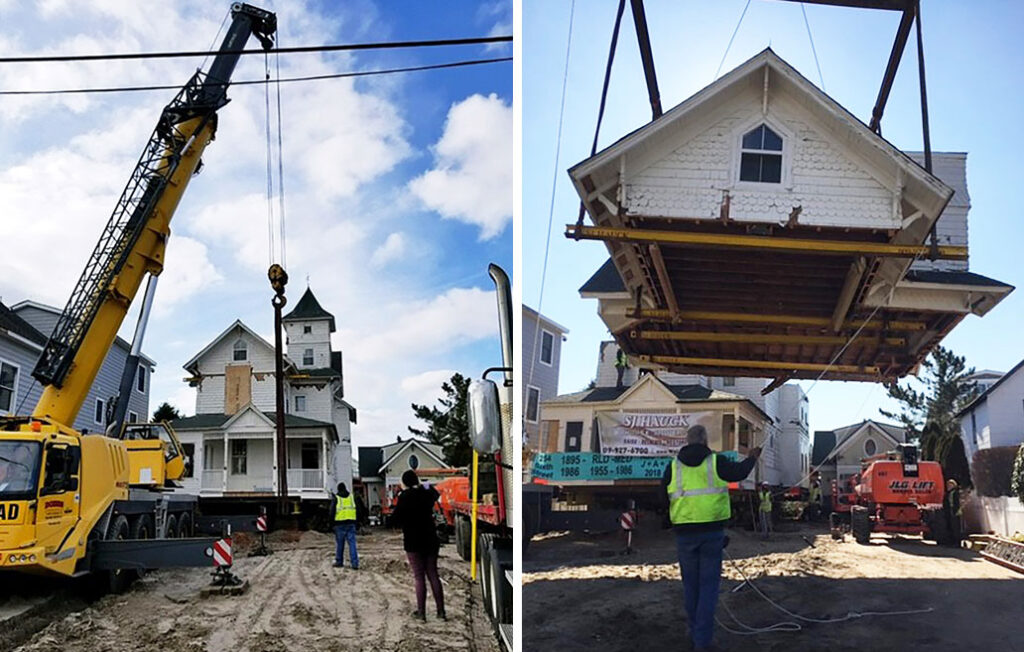
A large crane backs up to begin disassembling the house for the move. The house had to be moved in pieces. “It required walls to come down, and holes were made for straps to lift the third floor,” Scharnikow explains.
Negotiations with the builder were the easy part; the search for a new location was much more complex. As might be expected, there are lots of logistical issues involved in moving an entire house. The new owner explains, “The route limited which lot I could place the house on: the streets had to be wide, trees could not be leaning in, the property required a staging area for the crane, the house could not make certain turns, the bridges had to be able to support the weight.” It took her about eight months to find a suitable lot in Cape May. However, the developer was eager to have the house removed from its Avalon location, so it was stored in Egg Harbor until Scharnikow found the lot in Cape May.
Moving day proved to be a cross between a construction project and a parade. “This was a major undertaking involving numerous parties, including coordination of multiple townships, police, fire and construction crews.” The journey was arduous. “The house travelled very slowly, and held up traffic for miles.” The 38-mile trip took 4-5 hours. On the plus side, the “mobile” home attracted a lively, welcoming audience. “The community watched the house coming into town, and Wawa offered free coffee and donuts that day!”
Now the dust has settled (literally) and the grand old house looks as good as new. “I took my time researching the house,” Scharnikow says. “I studied pictures and interviewed older family members to re-create certain elements lost to time. My philosophy was not to move an old house to make it look modern — it had to be updated for 2020 but retain its historical roots.”
The family has kept the home as a rental property, providing an opportunity for others to experience a stay in this special dwelling. “Our first renters sent me pictures of themselves having wine and cheese in the tower! How great is that!?” says Scharnikow, who is gratified she was able to rescue this extraordinary piece of history. “This story is about preservation of old homes. These homes are mini museums, and they are being taken down too quickly. The house has a story to tell. I hope people enter the home and are taken back to historic New Jersey — where farmlands and simple cottages dotted the coast.”
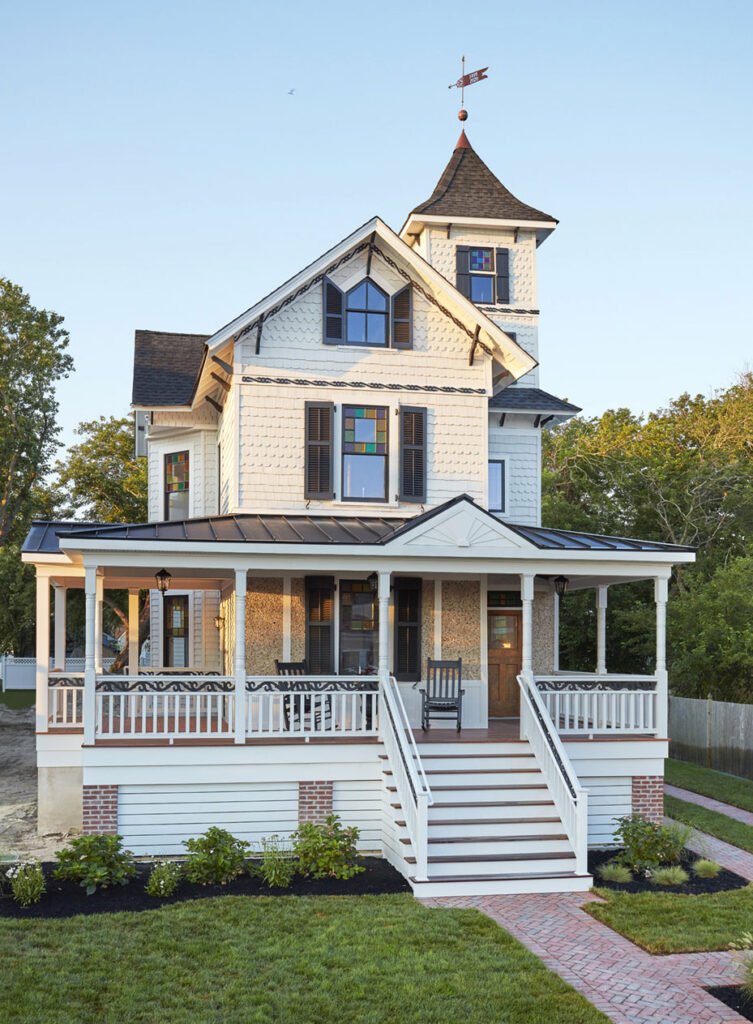
The renovated house on its new Cape May property. Scharnikow referred to old photographs to re-create some original features, such as the pebble dash stucco on the porch wall and the black exterior scrollwork.
Sources: builder, Paul Burgin Builders in Cape May; “Cedar Impressions” scallop, octagon and half-cove siding on front gable and tower and “Cedar Impressions” triple-5-inch straight-edge sawmill shingles on addition, CertainTeed.


